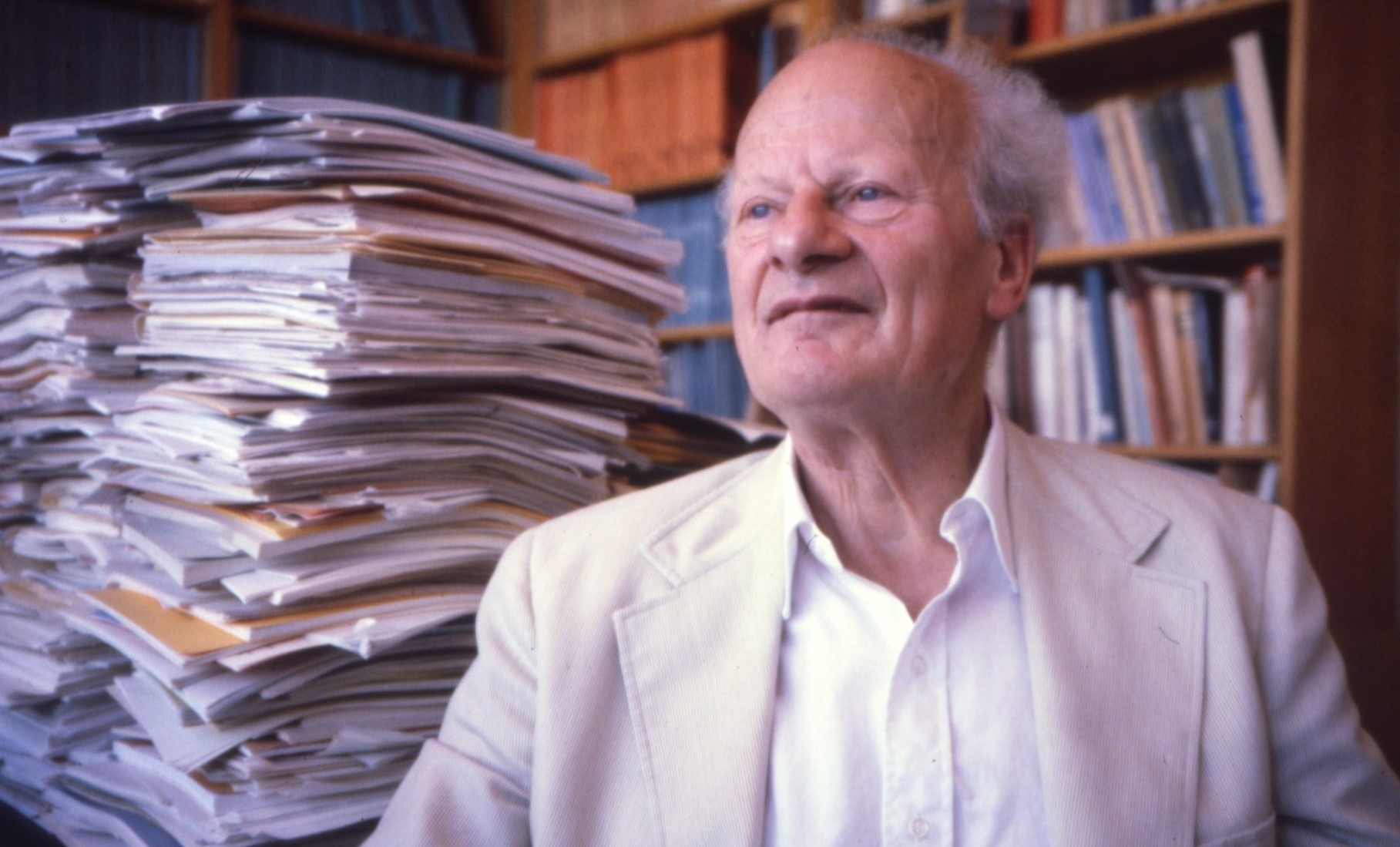
Hans Bethe, a renowned physicist and Nobel laureate, was not only an extraordinary scientist but also an inspirational figure whose contributions to the field of physics have had a profound impact on our understanding of the universe. Born in Germany in 1906, Bethe’s intellectual prowess became apparent at an early age, leading him to pursue a career in physics. Throughout his life, he made numerous groundbreaking discoveries and theoretical advancements that revolutionized the field. From his groundbreaking work on nuclear reactions and energy production in stars to his involvement in the Manhattan Project during World War II, Bethe’s contributions to scientific knowledge were unparalleled. In this article, we will explore 17 extraordinary facts about Hans Bethe that showcase his brilliance, influence, and lasting legacy in the scientific community.
Key Takeaways:
- Hans Bethe was a brilliant physicist who made groundbreaking contributions to nuclear physics, astrophysics, and fusion research. His legacy as a mentor and advocate for arms control continues to inspire future scientists.
- Bethe’s remarkable intellect and moral compass made him a trailblazer in the world of physics. His work on nuclear reactions, energy loss, and stellar evolution continues to shape our understanding of the universe.
The Early Years
Hans Bethe, born on July 2, 1906, in Strasbourg, Germany (now France), was a brilliant physicist who made significant contributions to the field of nuclear physics.
A Key Figure in the Manhattan Project
During World War II, Bethe played a crucial role in the development of the atomic bomb as part of the Manhattan Project.
Nobel Laureate
In 1967, Hans Bethe was awarded the Nobel Prize in Physics for his groundbreaking work on the nuclear reactions that power the stars.
Leader in Astrophysics
Bethe’s research in astrophysics revolutionized our understanding of stellar evolution and the processes that occur in the core of stars.
The Bethe-Weizsäcker Formula
Bethe, along with physicist Carl Friedrich von Weizsäcker, formulated a mathematical equation that describes the energy release in nuclear reactions.
Advocate for Nuclear Arms Control
Bethe was not only a brilliant scientist but also a dedicated advocate for arms control and disarmament.
Contributions to Fusion Research
Bethe made significant contributions to the field of fusion research, including his work on the concept of nuclear fusion as a potential energy source.
Mentor to Future Scientists
Throughout his career, Bethe mentored and inspired numerous aspiring scientists, leaving a lasting impact on the next generation of physicists.
Opposed to the Hydrogen Bomb
Despite his involvement in the development of the atomic bomb, Bethe became a vocal opponent of the more powerful hydrogen bomb.
Bridge Builder
Bethe was known for his ability to bridge the gap between theorists and experimentalists, bringing together different branches of physics.
The Bethe-Salpeter Equation
Bethe, along with physicist Julian Schwinger, derived the Bethe-Salpeter equation, which describes relativistic two-particle scattering.
Professor at Cornell University
Bethe joined the faculty at Cornell University in 1935 and remained there for the rest of his career, becoming a beloved figure in the physics community.
Author of the Bethe Bible
Bethe authored a renowned physics textbook called “Nuclear Physics: A Course Given by Hans Bethe at Cornell University.
Presidential Medal of Freedom
In 2006, Bethe was posthumously awarded the Presidential Medal of Freedom, the highest civilian honor in the United States.
Longevity and Legacy
Hans Bethe lived an incredibly long and productive life, passing away on March 6, 2005, at the age of His contributions to science continue to be celebrated and utilized to this day.
The Bethe Formula for Energy Loss
Bethe developed a formula that accurately describes the energy loss of fast-moving charged particles as they pass through matter.
A Trailblazer and Inspiration
Hans Bethe’s extraordinary intellect, moral compass, and passion for science left an indelible mark on the world of physics, making him a true trailblazer and an inspiration to future generations of scientists.
Conclusion
After exploring these 17 extraordinary facts about Hans Bethe, it becomes evident why he is considered one of the most remarkable figures in the field of physics. His contributions to our understanding of nuclear physics, stellar evolution, and energy production have left an indelible mark on scientific history.Bethe’s ability to excel both academically and professionally while offering valuable insights and advice to his colleagues is truly remarkable. His dedication to teaching and mentoring younger generations of physicists has ensured that his knowledge and expertise will continue to inspire and shape future scientific discoveries.From his significant role in the development of the atomic bomb to his contributions to the field of astrophysics, Bethe’s work exemplifies the power of scientific inquiry and innovation. His legacy serves as a reminder of the vast potential within the realm of human intellect and the limitless possibilities that can be achieved through scientific exploration.In conclusion, Hans Bethe’s life and work serve as a testament to the power of human curiosity, perseverance, and intellect. His contributions to the field of physics will continue to influence and inspire scientists for generations to come.
FAQs
1. Who is Hans Bethe?
Hans Bethe was a German-American physicist who made significant contributions to the fields of nuclear physics, stellar evolution, and energy production.
2. What were some of Hans Bethe’s notable achievements?
Bethe played a crucial role in the development of the atomic bomb during World War II and contributed to our understanding of stellar fusion and energy generation. He also received the Nobel Prize in Physics in 1967 for his contributions to the theory of nuclear reactions.
3. Was Hans Bethe involved in any other areas of research?
Yes, Bethe was also involved in the field of astrophysics and made significant contributions to our understanding of how stars evolve and produce energy.
4. Did Hans Bethe hold any prestigious positions during his career?
Yes, Bethe held various prestigious positions, including serving as the Director of the Theoretical Physics Division at the Los Alamos National Laboratory during the Manhattan Project.
5. What is Hans Bethe’s lasting legacy?
Bethe’s lasting legacy lies in his invaluable contributions to the field of physics, his teaching and mentoring of younger scientists, and his unwavering dedication to scientific inquiry and discovery.
Hans Bethe's extraordinary life and groundbreaking work continue to inspire generations of scientists. Delve deeper into the lives of other remarkable physicists, such as Richard Feynman, who played a crucial role in the Manhattan Project alongside Bethe. Explore the prestigious Nobel Prize, which recognized Bethe's contributions to nuclear physics and has honored countless other scientific luminaries. Unravel more fascinating facts about the enigmatic world of nuclear physics, a field that Bethe helped shape and revolutionize. Embark on a journey of discovery and let these extraordinary individuals and their groundbreaking work captivate your imagination.
Was this page helpful?
Our commitment to delivering trustworthy and engaging content is at the heart of what we do. Each fact on our site is contributed by real users like you, bringing a wealth of diverse insights and information. To ensure the highest standards of accuracy and reliability, our dedicated editors meticulously review each submission. This process guarantees that the facts we share are not only fascinating but also credible. Trust in our commitment to quality and authenticity as you explore and learn with us.


